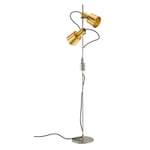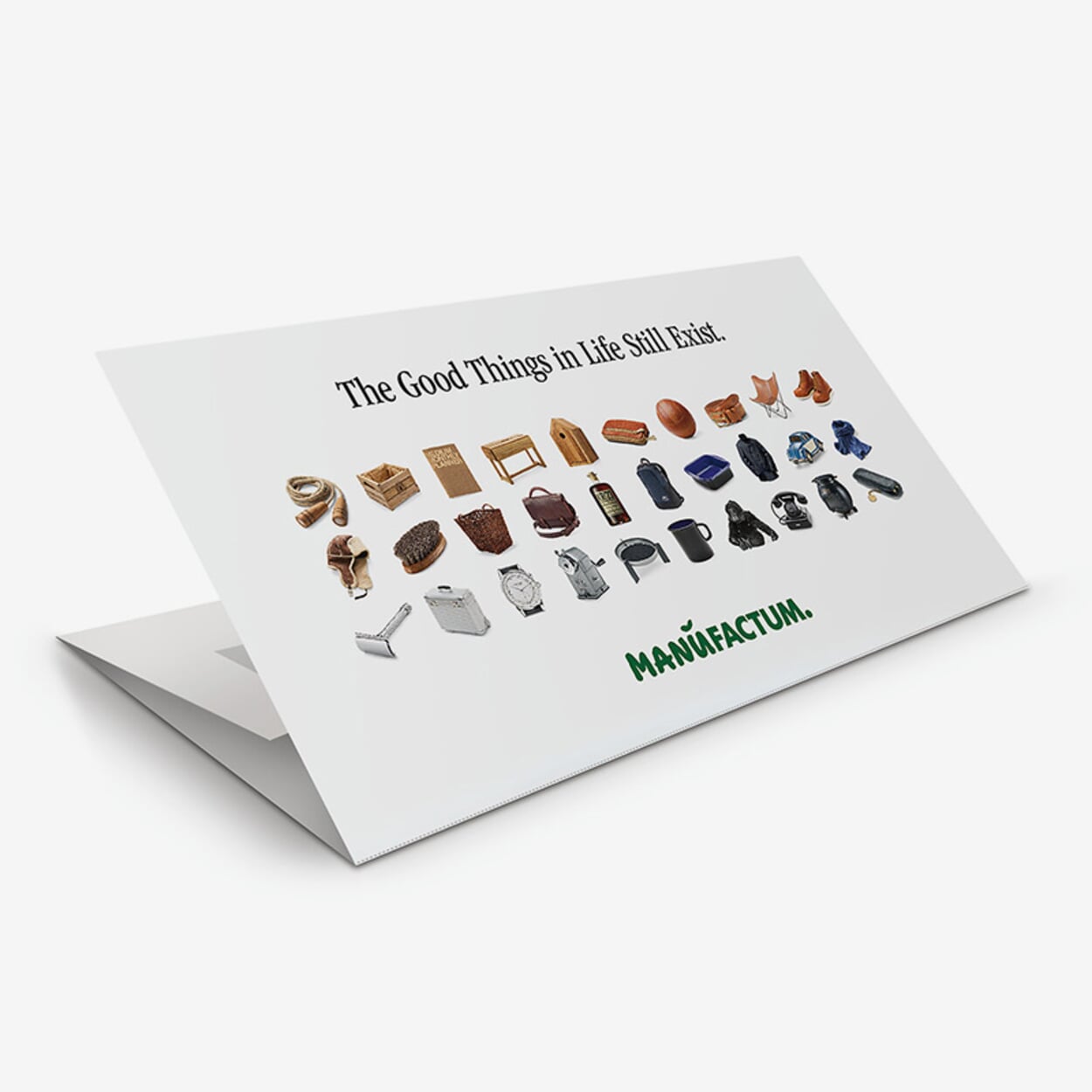Double floor lamp tripod

Double floor lamp tripod
- Adjustable: Screen height and tilt
- Variable: independently switchable
General Information
Light for everyday life. Under laboratory conditions
The design of this lamp, which formally refers to the 1960s, is reminiscent of a laboratory tripod with its stainless steel base and round rod, and each of its components, up to the cubic switch housing and the solid knurled screws, exudes a technical impression. However, it not only looks like a lab stand, but also has its essential functionality, which is to be able to adjust what you flange to it as variably as possible and in all directions: The two-part umbrellas can be adjusted in height and beam direction independently of each other by turning the knurled locking screws. At the same time, they can be switched separately and are open at the back, which means that the light is primarily directed, but always radiates part of it into the surroundings. The untreated brass and copper surfaces on the inside (and outside, by the way) ensure a warm, natural light tone. In terms of statics, by the way, the floor lamp manufactured by BTC in England comes close to a long lab stand: the filigree rod tends to oscillate a little after switching on and off for a short time and, if you align both lights the same, tilts a little in just that direction.
British, in Detail. Lamps from BTC.
Lamps made by BTC (= British Timeless Classics), in the vicinity of Oxford, have attained the status of timeless classics. The creative spirit and driving force behind the firm is Peter Bowles, who pursues his very clear idea and just as clearly realises his agenda. The process starts with the manufacture: Bowles wants to produce lamps that are British down to the level of detail. For example, the bone china-lamp shades come from a pottery in Stoke-on-Trent, known as the "the Potteries" because of the almost 500 potteries that used to be located there. Almost all are gone today and the firm, which also belongs to Bowles, would not exist except for BTC. He took it over when it was on the brink of bankruptcy and has restructured it while keeping all the employees. The hand-blown glass domes come from a glass blowing shop in Worcestershire which Bowles also bought. In addition to domes for lamps, the shop produces coloured glass windows for historical buildings and churches. A handful of glass blowers with their two small smelting furnaces practice the methods of glass blowing and uphold the once famous English tradition of this trade. The British manufacture of the lamps extends to the cables, too. Bowles was dissatisfied with the plastic wrapped cables on his first lamp, so he used a locally produced cloth wrapped cable from a clothes iron for his exhibition piece. The reaction was so positive that he has used cloth cable since. They are locally produced near the firm in home-based work.
Product Information
Article Number 22117
- Adjustable: Screen height and tilt
- Variable: independently switchable
Base (Ø 24 cm), rod, clamps and switch housing made of stainless steel. Two-piece shades (Ø 12 cm) outside and inside made of brass or copper, both come in a non-surface-treated version. Black textile cable (with clips), length 1.6 m. Plastic sockets E 27 (max. 60 W each). Height 1.4 m. Weight 5.8 kg. Delivery without an illuminant.
Have a question?
If you have a question concerning this product you are welcome to contact us. For this your E-Mail program will open.
Contact Us
For advice, spare parts or special requests - our customer service will take care of your questions and concerns, personally and competently.
You can reach us from Monday to Friday at +49 2309 939095 or anytime at info@manufactum.com
Gift Certificates
It is good for everything: With our PDF gift certificates you can choose from the entire Manufactum selection. Pick a motif which you can send by email or print out and present personally, immediately after submitting your order.
Order now


